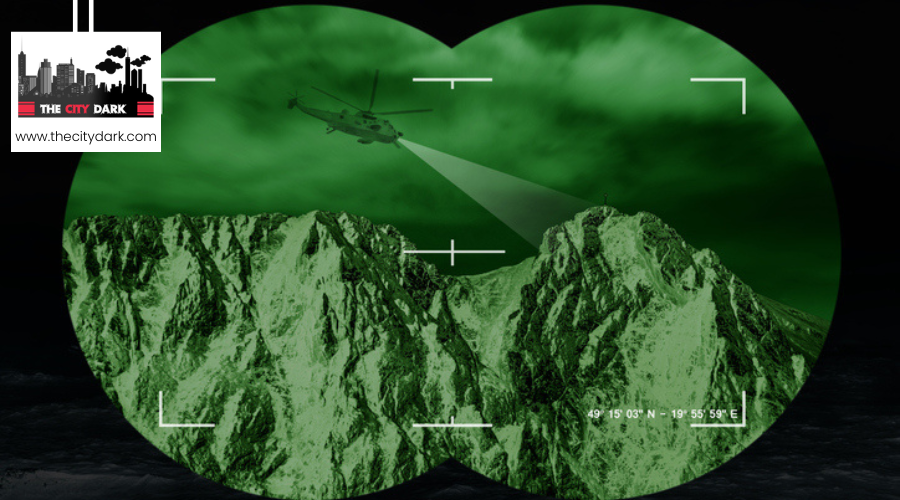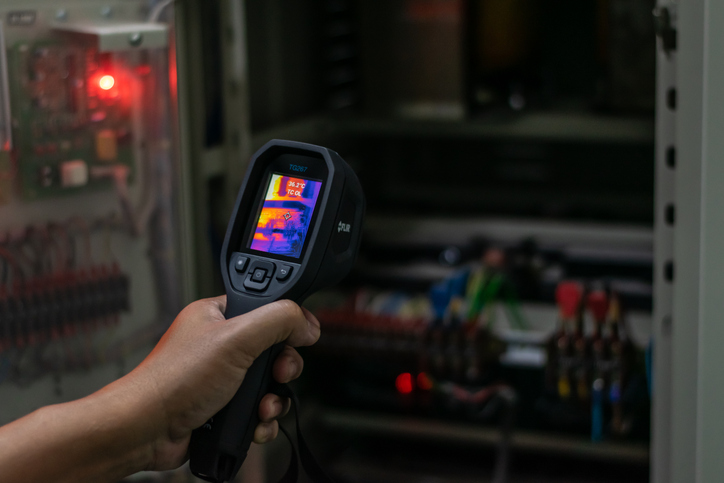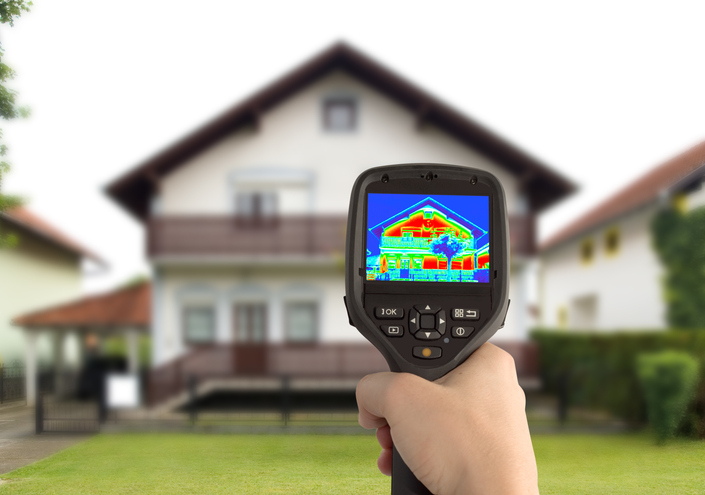In the aftermath of disaster, when night envelops the chaos, night vision acts as our guide through the invisible. It transforms faint light into clarity, aiding in navigating debris and locating survivors concealed in turmoil. Utilizing image intensifiers and thermal imaging, it enhances our ability to see in darkness, increasing the likelihood of saving lives. We can discern subtle heat signatures and spot hazards such as energized electrical wires, facilitating safer passage among the wreckage. This technology not only makes night operations more effective but also amplifies the success of rescue efforts. Exploring further, we find this technology fundamentally changes how we manage disasters.
Key Takeaways
- Night vision technology clears the dark, aiding in detailed site evaluations.
- It uncovers hidden threats like live wires or weak structures, making navigation safer.
- Thermal imaging detects heat from trapped people, quickening rescue.
- It boosts site navigation efficiency and safety by marking obstacles and dangers.
- It aids in smart resource distribution by accurately assessing disaster impacts.
Night Vision Fundamentals
Night vision technology transforms how we inspect disaster zones by making dim light brighter. It does this through image intensifiers, improving our night sight. Here’s the straightforward process: the device, with its parts like lenses, tubes, and screens, captures light. This light hits a special surface, releasing electrons. These electrons speed up and multiply, hitting another screen and lighting it up. The image often appears green because green helps us see details better in the dark.
This simple explanation highlights night vision’s vital role in navigating and evaluating disaster-struck areas under poor lighting. It changes the game in understanding and responding to the challenges of post-disaster situations.
Search and Rescue Operations
In the dark aftermath of disaster, night vision becomes your eyes, clarifying your path. It’s more than seeing—it’s finding survivors in the chaos. Night vision arms you to quickly evaluate and act, boosting chances of saving lives.
Enhancing Visibility in Darkness
In the wake of a disaster, making darkness visible is crucial for efficient search and rescue work. Leading this tech leap are night vision and thermal imaging cameras, pivotal in saving lives. Here’s their impact:
- Night vision aids rescuers. It reveals hidden dangers in the dark.
- Thermal imaging spots life through heat, guiding to survivors under rubble or in tough spots.
- These tools cut through darkness, boosting the speed and safety of rescues.
- They sharpen night operations, speeding up rescues.
Navigating Unstable Structures Safely
Leveraging the clarity night vision provides, moving through unstable structures safely is now achievable during search and rescue missions. Night vision tools allow clear sight in darkness, revealing hidden dangers in debris. This is crucial for navigating unstable structures where normal lights could be risky or useless. Moving cautiously on treacherous ground, night vision ensures awareness of your environment, helping to dodge potential collapses or hazards. This technology significantly boosts search operations, ensuring focus on finding those trapped without risking your safety. Night vision equips you to face the unpredictable conditions of post-disaster environments, making each step through unstable structures safer.
Identifying Survivors Efficiently
In search and rescue, night vision’s key boon is its swift spotting of survivors by their body heat in darkness or rubble. This skill sharply ups the odds of quick finds, in a race against time.
- Thermal imaging cameras in night vision gear make finding survivors simpler, by showing warm life amidst cold night or debris clearly.
- Scanning big areas turns easier with night vision, letting teams swiftly sweep large spaces.
- The quick finding of survivors jumps with night vision, a direct boon for saving lives.
Disaster Site Navigation
Navigating disaster sites at night turns difficult, visibility falls, and missing obstacles or dangers becomes easy. Night vision technology helps, lighting your path, allowing safe, efficient movement in dark. It’s not just clearer vision; it’s improved night operation, ensuring safety among ruins.
Overcoming Obstacle Visibility
In the chaos following a catastrophe, night vision technology becomes indispensable, lighting the way through the wreckage. These devices make seeing obstacles easy, transforming difficult post-disaster surveys into manageable tasks. They illuminate what lies ahead, enabling the detection of dangers and the discovery of safe paths, leading to swift and precise evaluations.
- Simple and Direct: Night vision cuts through darkness, revealing hidden threats.
- Be Vigilant: It allows for easier movement amid ruins.
- Spot Dangers: Night vision highlights lurking dangers, from shaky buildings to dangerous chemicals, ensuring safer operations.
The value of night vision in navigating disaster sites with clear sight cannot be overstated.
Nighttime Operation Efficiency
Night vision tech boosts efficiency in night operations at disaster sites. It helps you move through difficult terrains in low light. These devices are key for clear visibility to assess disaster impacts. With them, finding and checking critical areas needing quick action after disasters is easier. Moving through debris and obstacles is less daunting. Night vision improves seeing in the dark. This progress enhances post-disaster checks, making navigating and assessing affected areas smooth. Thus, night vision devices are vital for optimizing operations and thorough evaluations at night.
Safety in Darkness
Enhanced night vision technology significantly improves safety during nighttime operations in disaster zones. It’s not merely about visual enhancement in darkness but about the crucial role night vision plays in safeguarding lives by offering clear visibility to navigate through dangerous terrains. In moments where every second is critical, the ability to promptly discern safe routes and sidestep hazards becomes invaluable.
- Locate shelter entrances swiftly: Night vision aids responders in quickly identifying access points, minimizing exposure to risks.
- Spot obstacles and dangers: It facilitates the detection of potential threats around residences, promoting safer passage.
- Support in emergency sustenance search: In dire situations, night vision can boost the likelihood of successfully finding and capturing food sources.
Identifying Hidden Dangers
In the chaos after a disaster, night vision technology is vital for spotting hidden dangers that threaten rescue efforts and survivor safety. These devices give a crucial edge in navigating the unpredictable aftermath of natural disasters, where traditional methods fail. Night vision reveals faint heat signatures, making the dark, obscured terrain visible. You’re not just looking; you’re seeing beyond human vision’s natural limits, uncovering threats that would otherwise stay hidden.
As you navigate through debris, night vision technology becomes a key tool in identifying lurking dangers. It makes live electrical wires, a silent but deadly hazard, visible, preventing possible electrocutions. It also helps assess the stability of structures weakened by the disaster, spotting those at risk of collapse, and keeping you and others away from these unsafe areas.
In short, night vision devices are crucial for risk mitigation, adding a layer of safety essential in the hours and days after a disaster. Their role in improving visibility isn’t just about seeing in the dark; it’s about lighting the way to recovery by spotting and avoiding hidden dangers.
Thermal Imaging Applications
Thermal imaging technology changes how we search for survivors and assess dangers after disasters. It sees heat differences that our eyes can’t, letting rescuers find people trapped under rubble or hidden away. This is crucial in the first hours after a disaster, when finding survivors quickly can save lives.
Using thermal imaging after a disaster helps with:
- Finding People: Thermal devices spot the heat from people trapped or hidden, leading to faster rescues.
- Spotting Fire Risks: After a disaster, thermal imaging shows where fires might start or spread by revealing hot spots.
- Moving in Smoke: For firefighters, thermal cameras make it possible to see through smoke, helping them move safely and work better.
Thermal imaging doesn’t just help find survivors; it also gives a clearer view of dangers. This means faster, smarter decisions can be made, saving lives and preventing more damage.
Enhancing Emergency Response
Expanding on thermal imaging uses, night vision technology greatly improves emergency response. This tool gives teams better visibility in darkness or low light. This is crucial when seconds matter and quick, accurate assessments can save lives.
With night vision, navigating disaster sites becomes safer and more efficient. You gain awareness of hazards, access to hard-to-reach areas, and safer rescue operations. Night vision lets you see through smoke and debris, revealing trapped individuals’ heat signatures.
Moreover, night vision devices improve post-disaster evaluations. They allow for strategic resource allocation, ensuring timely help. Night vision technology greatly enhances emergency response, raising the success rate of rescues and disaster management.
Frequently Asked Questions
How Does Night Vision Help?
Night vision lets you see in darkness, aiding in wildlife observation, search operations, and locating disaster survivors. It’s crucial for swift actions, enhancing life-saving chances.
How Does Night Vision Help the Military?
Night vision aids the military in conducting stealth operations, surveilling enemies, and recovering equipment under cover of darkness. It enhances the capacity to observe without detection, securing success in night missions.
What Is the Night Vision Assist System?
The Night Vision Assist System, born from military tech, sharpens vision in the dark. It’s crucial to master its use for navigating and evaluating areas hit by disaster, proving indispensable for those responding.
What Does Night Vision Detect?
Night vision reveals objects in the infrared range, showing temperature changes, helping track wildlife. It transforms these differences into light we can see, letting us view in dark by spotlighting heat from different sources.
Conclusion
In summary, night vision changes the game after disasters. It helps navigate risky sites, find hidden threats, and boost search and rescue. It uses thermal imaging, helping responders make fast, smart choices, saving lives. So, in disasters, when it’s dark, night vision guides, helping you assess, act, and help better.


